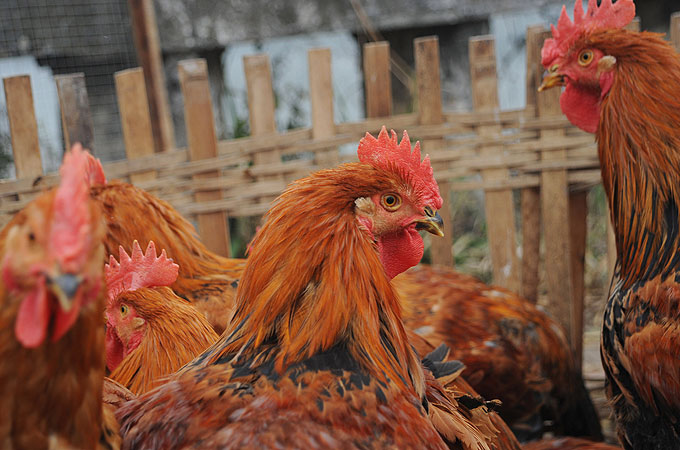UN warns of mutant strain of bird flu virus
Food agency says new strain of H5N1 avian flu is spreading in Asia and may breach defences of existing vaccines.

 |
| UN agency has called for greater surveillance, saying there could be a “major resurgence” of disease [GALLO/GETTY] |
The UN Food and Agriculture Organisation (FAO) has warned of a possible resurgence of the deadly bird flu virus, saying that a mutant strain is spreading in Asia.
A mutant strain of the H5N1 avian influenza, which can apparently sidestep defences of existing vaccines, is spreading in China and Vietnam, the UN agency said in a statement on Monday.
Keep reading
list of 4 itemsAre seed-sowing drones the answer to global deforestation?
Rainfall set to help crews battling wildfire near Canada’s Fort McMurray
The Alabama town living and dying in the shadow of chemical plants
“Virus circulation in Vietnam poses a direct threat to Cambodia, Thailand and Malaysia as well as endangering the Korean peninsula and Japan,” it said.
It called for greater surveillance to contain its outbreak, saying there could be a “major resurgence” of the disease.
Last week, a six-year-old girl died due to the avian influenza, the eighth death this year, in Cambodia, the World Health Organisation [WHO] reported.
Vietnam has suspended its springtime poultry vaccination this year, FAO said. Most of the northern and central parts of the country where the virus is endemic have been invaded by the new strain.
Spread beyond Asia
FAO warned that the virus could be spread beyond Asia by wild bird migration.
Bird migrations over the past two years have brought H5N1 to countries that had been virus-free for several years, including Israel, the Palestinian territories, Bulgaria, Romania, Nepal and Mongolia, it said.
“Wild birds may introduce the virus, but people’s actions in poultry production and marketing spread it,” Juan Lubroth, FAO’s chief veterinary official, said.
WHO said there have been 331 human deaths from 565 confirmed bird flu cases globally since 2003 when it was first detected.
The virus was eliminated from most of the 63 countries infected at its peak in 2006, but it remained endemic in six countries: Bangladesh, China, Egypt, India, Indonesia and Vietnam.
The number of outbreaks in poultry and wild bird populations shrank from a high of 4,000 to 302 in mid-2008, but outbreaks have risen progressively since, with almost 800 cases reported in 2010-2011, FAO said.
“The general departure from the progressive decline in 2004-2008 could mean that there will be a flare-up of H5N1 this fall and winter, with people unexpectedly finding the virus in their backyard,” Lubroth said in a statement.